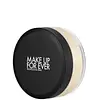What's inside
What's inside
 Key Ingredients
Key Ingredients

 Benefits
Benefits

 Concerns
Concerns

 Ingredients Side-by-side
Ingredients Side-by-side

Silica
AbrasivePolymethyl Methacrylate
Polymethylsilsesquioxane
Boron Nitride
AbsorbentDimethicone
EmollientCaprylic/Capric Triglyceride
MaskingHdi/Trimethylol Hexyllactone Crosspolymer
Methicone
EmollientEthylhexyl Palmitate
EmollientCaprylyl Glycol
EmollientEthylhexylglycerin
Skin ConditioningMacadamia Ternifolia Seed Oil
EmollientHydrogenated Lecithin
EmulsifyingTriethoxycaprylylsilane
Prunus Persica Flower Extract
MoisturisingArnebia Euchroma Root Extract
AntimicrobialNephrite Powder
AbrasiveSilk Powder
Skin ConditioningButylene Glycol
HumectantPearl Powder
Kaolin
AbrasiveTin Oxide
AbrasiveDimethicone/Vinyl Dimethicone Crosspolymer
Skin ConditioningDipropylene Glycol
HumectantPentylene Glycol
Skin ConditioningTocopherol
AntioxidantWater
Skin ConditioningGlycerin
HumectantRibes Nigrum Leaf Extract
PerfumingRubus Idaeus Leaf Extract
Skin ConditioningNymphaea Alba Flower Extract
Skin ConditioningHydroxyacetophenone
AntioxidantSorbic Acid
PreservativeCI 77742
Cosmetic ColorantCI 77891
Cosmetic ColorantSilica, Polymethyl Methacrylate, Polymethylsilsesquioxane, Boron Nitride, Dimethicone, Caprylic/Capric Triglyceride, Hdi/Trimethylol Hexyllactone Crosspolymer, Methicone, Ethylhexyl Palmitate, Caprylyl Glycol, Ethylhexylglycerin, Macadamia Ternifolia Seed Oil, Hydrogenated Lecithin, Triethoxycaprylylsilane, Prunus Persica Flower Extract, Arnebia Euchroma Root Extract, Nephrite Powder, Silk Powder, Butylene Glycol, Pearl Powder, Kaolin, Tin Oxide, Dimethicone/Vinyl Dimethicone Crosspolymer, Dipropylene Glycol, Pentylene Glycol, Tocopherol, Water, Glycerin, Ribes Nigrum Leaf Extract, Rubus Idaeus Leaf Extract, Nymphaea Alba Flower Extract, Hydroxyacetophenone, Sorbic Acid, CI 77742, CI 77891
Mica
Cosmetic ColorantKaolin
AbrasiveSilica
AbrasiveZea Mays Starch
AbsorbentLauroyl Lysine
Skin ConditioningCaprylyl Glycol
EmollientPentylene Glycol
Skin ConditioningDicaprylyl Carbonate
EmollientSqualane
EmollientEthylhexylglycerin
Skin ConditioningSodium Dehydroacetate
PreservativeTocopheryl Acetate
AntioxidantTocopherol
AntioxidantCI 77007
Cosmetic ColorantCI 77491
Cosmetic ColorantCI 77492
Cosmetic ColorantIngredients Explained
These ingredients are found in both products.
Ingredients higher up in an ingredient list are typically present in a larger amount.
Caprylyl Glycol is a humectant and emollient, meaning it attracts and preserves moisture.
It is a common ingredient in many products, especially those designed to hydrate skin. The primary benefits are retaining moisture, skin softening, and promoting a healthy skin barrier.
Though Caprylyl Glycol is an alcohol derived from fatty acids, it is not the kind that can dry out skin.
This ingredient is also used as a preservative to extend the life of products. It has slight antimicrobial properties.
Learn more about Caprylyl GlycolEthylhexylglycerin (we can't pronounce this either) is commonly used as a preservative and skin softener. It is derived from glyceryl.
You might see Ethylhexylglycerin often paired with other preservatives such as phenoxyethanol. Ethylhexylglycerin has been found to increase the effectiveness of these other preservatives.
Kaolin is a clay. It is used for oil control and to help minimize pores. Like other clays, kaolin has the ability to absorb excess sebum or oil. This can help clean out pores and mattify the skin.
Some types of kaolin may have exfoliating properties. When water is added to kaolin, it becomes a paste with small abrasive particles.
Most kaolin is a white color, but may be pink/orange/red depending on where it comes from.
The name 'kaolin' comes from a Chinese village named 'Gaoling'. Kaolin clay comes from rocks rich in kaolinite. Kaolinite, the mineral, has a silicate layered structure. Kaolinite is formed from chemical weathering of aluminum siilicate minerals.
Besides skincare, kaolin is commonly used to make glossy paper, in ceramics, toothpaste, and as medicine to soothe stomach issues.
Learn more about KaolinPentylene glycol is typically used within a product to thicken it. It also adds a smooth, soft, and moisturizing feel to the product. It is naturally found in plants such as sugar beets.
The hydrophilic trait of Pentylene Glycol makes it a humectant. As a humectant, Pentylene Glycol helps draw moisture from the air to your skin. This can help keep your skin hydrated.
This property also makes Pentylene Glycol a great texture enhancer. It can also help thicken or stabilize a product.
Pentylene Glycol also acts as a mild preservative and helps to keep a product microbe-free.
Some people may experience mild eye and skin irritation from Pentylene Glycol. We always recommend speaking with a professional about using this ingredient in your routine.
Pentylene Glycol has a low molecular weight and is part of the 1,2-glycol family.
Learn more about Pentylene GlycolSilica, also known as silicon dioxide, is a naturally occurring mineral. It is used as a fine, spherical, and porous powder in cosmetics.
Though it has exfoliant properties, the function of silica varies depending on the product.
The unique structure of silica enhances the spreadability and adds smoothness, making it a great texture enhancer.
It is also used as an active carrier, emulsifier, and mattifier due to its ability to absorb excess oil.
In some products, tiny microneedles called spicules are made from silica or hydrolyzed sponge. When you rub them in, they lightly polish away dead skin layers and enhance the penetration of active ingredients.
Learn more about SilicaTocopherol (also known as Vitamin E) is a common antioxidant used to help protect the skin from free-radicals and strengthen the skin barrier. It's also fat soluble - this means our skin is great at absorbing it.
Vitamin E also helps keep your natural skin lipids healthy. Your lipid skin barrier naturally consists of lipids, ceramides, and fatty acids. Vitamin E offers extra protection for your skin’s lipid barrier, keeping your skin healthy and nourished.
Another benefit is a bit of UV protection. Vitamin E helps reduce the damage caused by UVB rays. (It should not replace your sunscreen). Combining it with Vitamin C can decrease sunburned cells and hyperpigmentation after UV exposure.
You might have noticed Vitamin E + C often paired together. This is because it is great at stabilizing Vitamin C. Using the two together helps increase the effectiveness of both ingredients.
There are often claims that Vitamin E can reduce/prevent scarring, but these claims haven't been confirmed by scientific research.
Learn more about Tocopherol